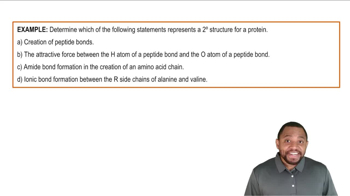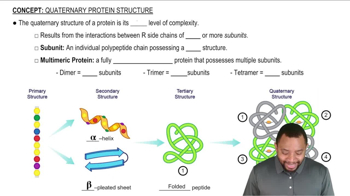What are some differences between each of the following pairs?
b. an ⍺ helix and collagen
 Verified step by step guidance
Verified step by step guidance Verified video answer for a similar problem:
Verified video answer for a similar problem:



 1:5m
1:5mMaster Secondary Protein Structure Concept 1 with a bite sized video explanation from Jules
Start learning